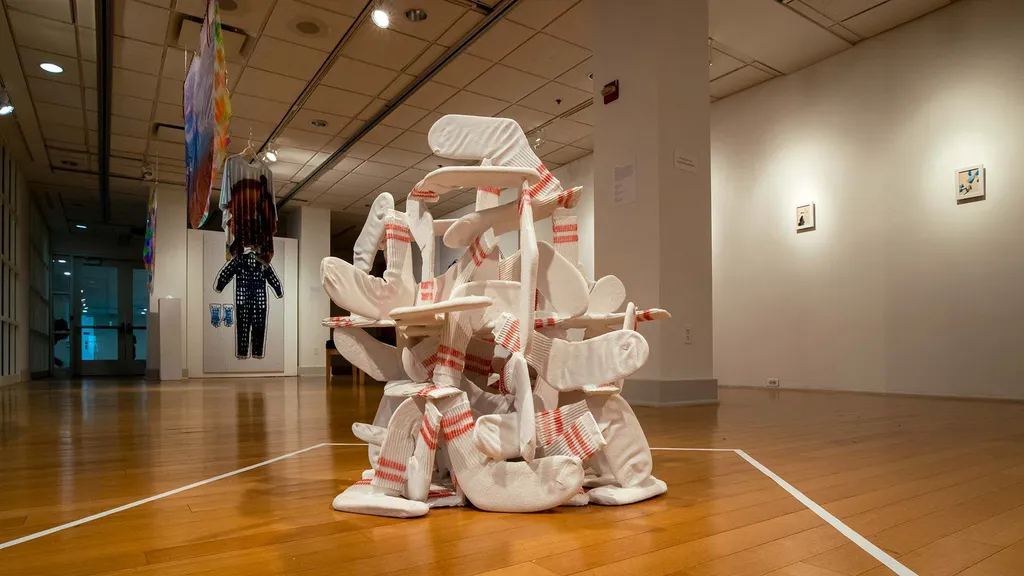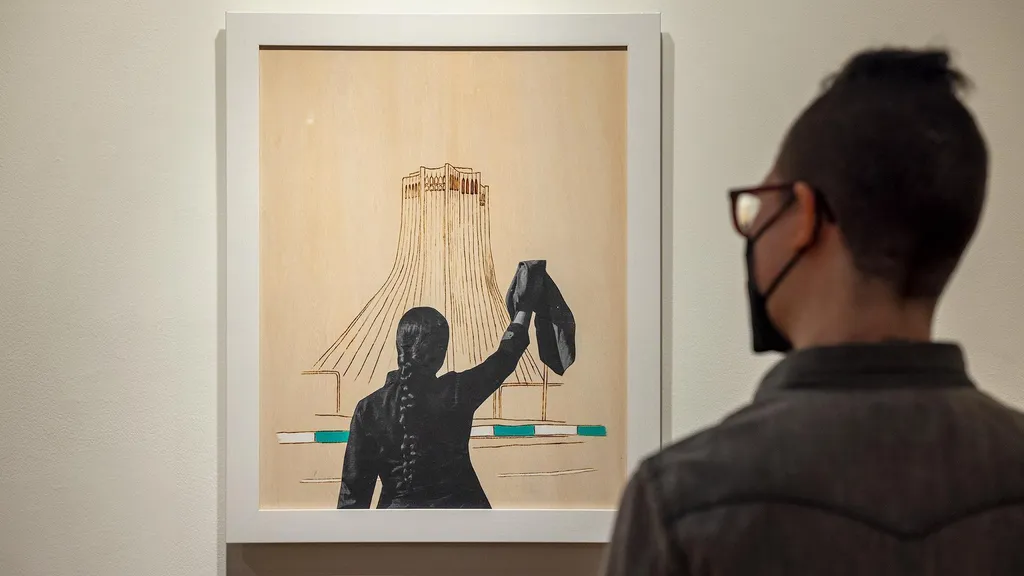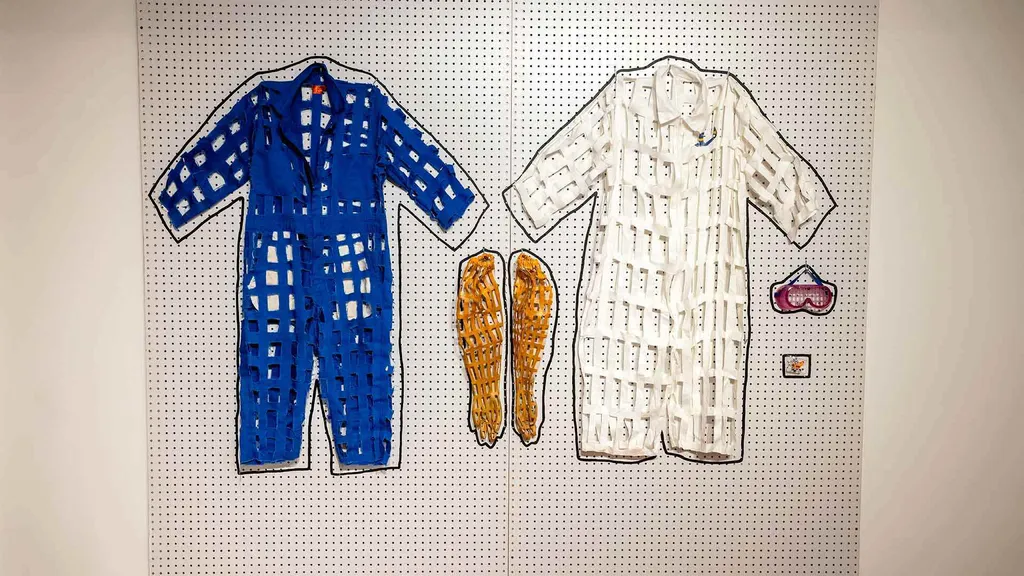- February 10, 2023
- By Sala Levin ’10
If every jumbled pile of socks were a work of art, parents worldwide would preserve their teenagers’ clothing-strewn rooms as if they had a Picasso on their hands. But in a new exhibit in the University of Maryland’s Stamp Gallery, socks take center stage—only they’re plaster, not cotton.
“Unfold,” which opened last month and has its opening reception tonight, examines what clothing can be beyond a functional—or even purely decorative—garment. The show’s ponchos, ventilated jumpsuits and scenes of protest explore how clothing can make statements on politics, religion, personal identity, climate change and more.

For Baltimore-based artist Elliot Doughtie, the unassuming tube sock, in all its red-striped blandness, is an avenue to unpack how clothing informs gender norms. In “Group Activity,” a drawing on paper, the mountain formed by dozens of the traditionally masculine socks “touches on the idea of gender performance as something that is enacted through repetition,” said Maura Callahan, a Ph.D. student in art history who curated the exhibit.
Hanging next to “Group Activity,” “Solo” depicts a sad, solitary sock, maybe one that vanished in the washing machine. Without the reinforcement of its army of other socks, this one seems weak and pathetic—everything a man isn’t supposed to be. On the floor beside the drawings, three structures appear to be heaps of socks, but are made entirely of plaster and weigh up to 80 pounds.

Along one wall, a series of small mixed-media pieces on wood focuses on the ongoing women’s revolution in Iran, sparked by the September murder of Jina (Mahsa) Amini, who was arrested and beaten by the country’s so-called “morality police.” Her alleged crime? Not wearing her hijab in accordance with Iranian laws. Amini died three days later as a result of her injuries.
Mojdeh Rezaeipour, an Iranian-born artist now living in Washington, D.C., was inspired by the incident and by the uprising that has followed, led by women protesting their repressive government. The pieces on display in “Unfold,” all untitled, are based on real photographs and are transposed onto wood. “I love that they're so small, because these are really monumental acts that we're seeing happen, but they're actually much smaller pieces in a far larger picture,” said Callahan.
Climate change is another theme in the exhibit. Baltimore-based artist Hoesy Corona’s “Climate Ponchos,” made of vinyl, silk jersey and faux leather, are printed with images of people escaping climate disasters. “The most fundamental purpose of clothing is to mediate contact between our bodies and the environment,” said Callahan. “That environment is now rapidly and dramatically changing, so Hoesy's work encourages us to think more deeply about the space in between ourselves and our surroundings that clothing inhabits, especially for those who have been forced to leave home."

The utility of clothing is also a question that interests HH Hiaasen, a Richmond, Va.,-area artist. For several years, Hiaasen has been creating what they call “ventilated clothing,” or clothing with lots of cut-outs. A jumpsuit, gloves, safety goggles and even a punctured N95 mask are all on display in “Unfold.”
“It kind of engages this idea of the relationship between labor and vulnerability, because these are all things that you would wear doing manual labor, but they're completely useless because they're filled with holes,” said Callahan.
Well, maybe not completely useless. Hiassen has sold many of the jumpsuits as ready-to-wear items. So, are they meant to be worn solo or with a bodysuit underneath? “It’s up to you,” said Callahan.
The opening reception for “Unfold” will take place tonight from 6 to 8 p.m. at the Stamp Gallery. The reception is open to the public.
Topics
Arts & Culture